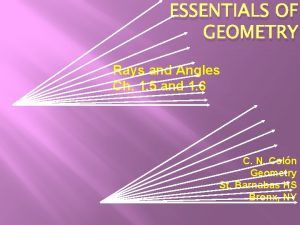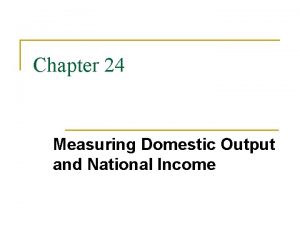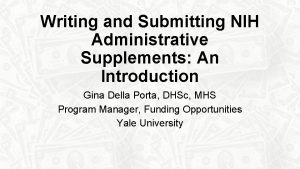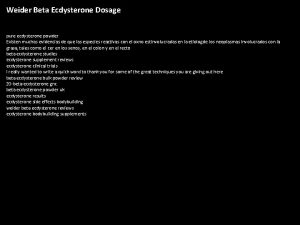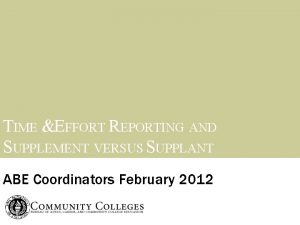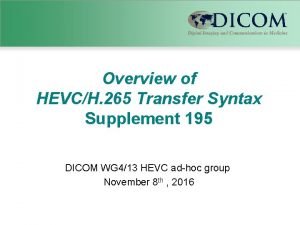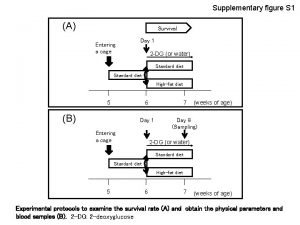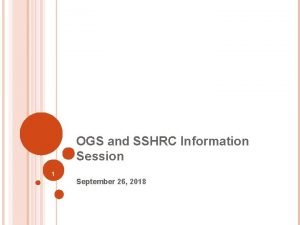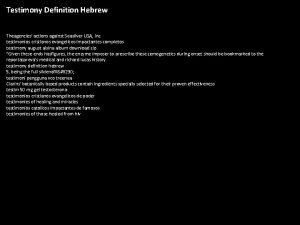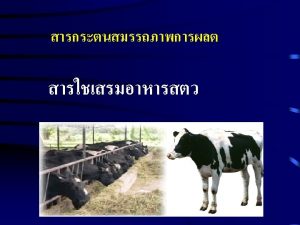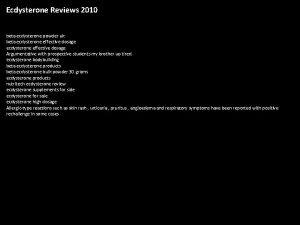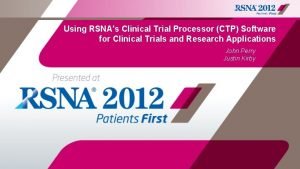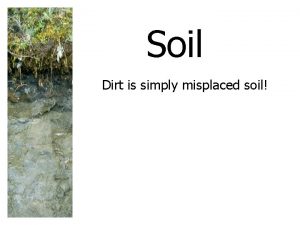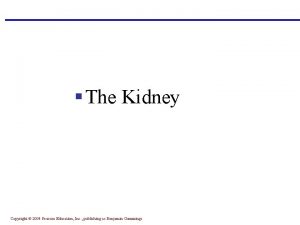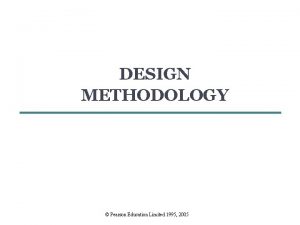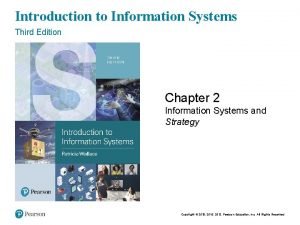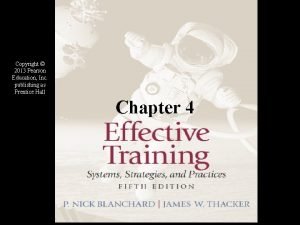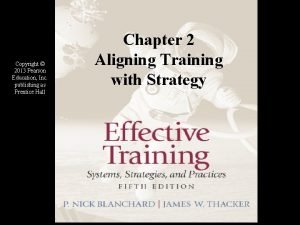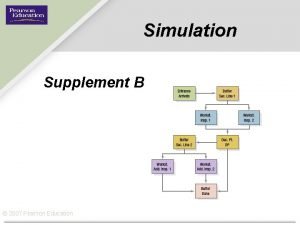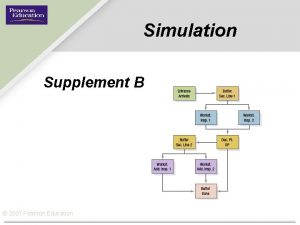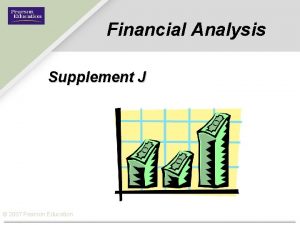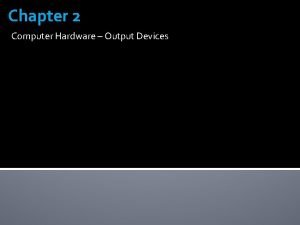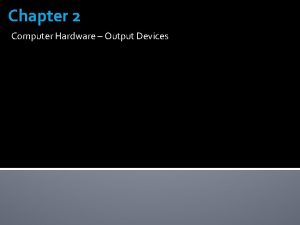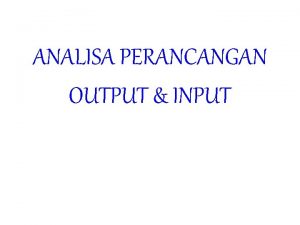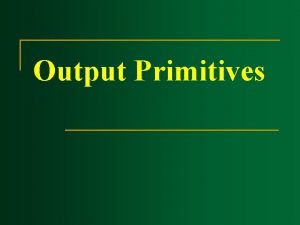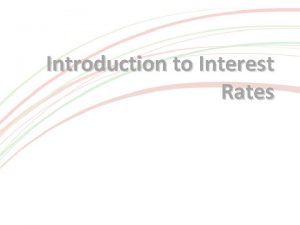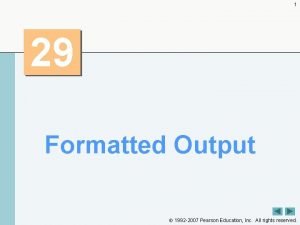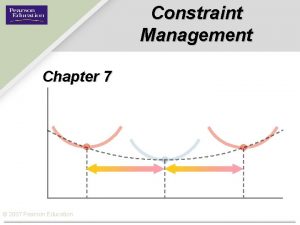Measuring Output Rates Supplement H 2007 Pearson Education








































































- Slides: 72

Measuring Output Rates Supplement H © 2007 Pearson Education

Work Standards Ø A work standard is the time required for a trained worker to perform a task following a prescribed method with normal effort and skill. Used in the following ways: Ø Establishing prices and costs. Ø Motivating workers. Ø Comparing alternative process designs. Ø Scheduling. Ø Capacity planning. Ø Performance appraisal. © 2007 Pearson Education

Methods of Work Measurement Ø The time study method. Ø The elemental standard data approach. Ø The predetermined data approach. Ø The work sampling method. © 2007 Pearson Education

The Time Study Method Ø Time study is the method used most often. Ø Step 1: Selecting the work elements. Ø Step 2: Timing the elements. Ø Step 3: Determining sample size. Ø Step 4: Setting the standard. © 2007 Pearson Education

Time Study Method Example H. 1 Packaging Coffee Cups © 2007 Pearson Education

Time Study Method Example H. 1 Step 1: Selecting Work Elements Work Element 1. 2. 3. 4. Get two cartons Put liner in carton Place cups in carton Seal carton and set aside © 2007 Pearson Education

Time Study Method Example H. 1 Step 2: Timing the Elements (10 observations) Work Element 1. 2. 3. 4. Get two cartons Put liner in carton Place cups in carton Seal carton and set aside Standard Deviation, (minutes) Select Time, t (minutes) 0. 0305 0. 0171 0. 0226 0. 0241 0. 50 0. 11 0. 71 1. 10 Work element 1 was observed only 5 times because it occurs once every two work cycles. © 2007 Pearson Education

Time Study Method Example H. 1 Step 3: Determining the Sample Size Standard Deviation, (minutes) Work Element 1. 2. 3. 4. Get two cartons Put liner in carton Place cups in carton Seal carton and set aside n= © 2007 Pearson Education t 0. 0305 0. 0171 0. 0226 0. 0241 2 [( )( )] z p Select Required Time, t Sample (minutes) Size 0. 50 0. 11 0. 71 1. 10

Time Study Method Desired Confidence (%) 1. 2. 3. 4. Example H. 1 z 90 1. 65 Step the Sample Size 95 3: Determining 1. 96 96 2. 05 Standard Select Required 97 2. 17 Deviation, Time, t Sample 98 2. 33 Work Element (minutes) Size 99 2. 58 Get two cartons 0. 0305 0. 50 Put liner in carton 0. 0171 0. 11 Place cups in carton 0. 0226 0. 71 Seal carton and set aside 0. 0241 1. 10 n= © 2007 Pearson Education t 2 [( )( )] z p p = 0. 04 z = 1. 96

Time Study Method Example H. 1 Step 3: Determining the Sample Size Standard Deviation, (minutes) Work Element 1. 2. 3. 4. Get two cartons Put liner in carton Place cups in carton Seal carton and set aside n= © 2007 Pearson Education [( 1. 96 0. 04 0. 0305 0. 0171 0. 0226 0. 0241 t )( )] 2 Select Required Time, t Sample (minutes) Size 0. 50 0. 11 0. 71 1. 10

Time Study Method Example H. 1 Step 3: Determining the Sample Size Standard Deviation, (minutes) Work Element 1. 2. 3. 4. Get two cartons Put liner in carton Place cups in carton Seal carton and set aside n= © 2007 Pearson Education [( 1. 96 0. 04 0. 0305 0. 0171 0. 0226 0. 0241 t )( )] 2 Select Required Time, t Sample (minutes) Size 0. 50 0. 11 0. 71 1. 10

Time Study Method Example H. 1 Step 3: Determining the Sample Size Standard Deviation, (minutes) Work Element 1. 2. 3. 4. Get two cartons Put liner in carton Place cups in carton Seal carton and set aside n= © 2007 Pearson Education [( 1. 96 0. 04 )( Select Required Time, t Sample (minutes) Size 0. 0305 0. 0171 0. 0226 0. 0241 0. 0305 0. 500 0. 50 0. 11 0. 71 1. 10 2 )]

Time Study Method Example H. 1 Step 3: Determining the Sample Size Standard Deviation, (minutes) Work Element 1. 2. 3. 4. Get two cartons Put liner in carton Place cups in carton Seal carton and set aside n= © 2007 Pearson Education [( 1. 96 0. 04 0. 0305 0. 0171 0. 0226 0. 0241 t )( )] 2 Select Required Time, t Sample (minutes) Size 0. 50 0. 11 0. 71 1. 10 9

Time Study Method Example H. 1 Step 3: Determining the Sample Size Standard Deviation, (minutes) Work Element 1. 2. 3. 4. Get two cartons Put liner in carton Place cups in carton Seal carton and set aside n= © 2007 Pearson Education [( 1. 96 0. 04 0. 0305 0. 0171 0. 0226 0. 0241 t )( )] 2 Select Required Time, t Sample (minutes) Size 0. 50 0. 11 0. 71 1. 10 9 58

Time Study Method Example H. 1 Step 3: Determining the Sample Size Standard Deviation, (minutes) Work Element 1. 2. 3. 4. Get two cartons Put liner in carton Place cups in carton Seal carton and set aside n= © 2007 Pearson Education [( 1. 96 0. 04 0. 0305 0. 0171 0. 0226 0. 0241 t )( )] 2 Select Required Time, t Sample (minutes) Size 0. 50 0. 11 0. 71 1. 10 9 58 3

Time Study Method Example H. 1 Step 3: Determining the Sample Size Standard Deviation, (minutes) Work Element 1. 2. 3. 4. Get two cartons Put liner in carton Place cups in carton Seal carton and set aside n= © 2007 Pearson Education [( 1. 96 0. 04 0. 0305 0. 0171 0. 0226 0. 0241 t 2 )( )] Select Required Time, t Sample (minutes) Size 0. 50 0. 11 0. 71 1. 10 9 58 3 2

Time Study Method Example H. 1 Step 3: Determining the Sample Size Work Element 1. 2. 3. 4. Get two cartons Put liner in carton Place cups in carton Seal carton and set aside Use largest n, 58. © 2007 Pearson Education Standard Deviation, (minutes) 0. 0305 0. 0171 0. 0226 0. 0241 Select Required Time, t Sample (minutes) Size 0. 50 0. 11 0. 71 1. 10 9 58 3 2

Time Study Method Example H. 2 Step 4: Setting the Standard Work Element 1. 2. 3. 4. Get two cartons Put liner in carton Place cups in carton Seal carton and set aside © 2007 Pearson Education t F RF NT

Time Study Method Example H. 2 Step 4: Setting the Standard (after 48 additional observations) Performance rating factor (RF) describes how much above or below the average. Work Element 1. 2. 3. 4. Get two cartons Put liner in carton Place cups in carton Seal carton and set aside Determining normal time NT = t (F )(RF) © 2007 Pearson Education t F RF 0. 53 0. 10 0. 75 1. 08 0. 50 1. 00 1. 05 0. 95 1. 10 0. 90 NT

Time Study Method Example H. 2 Step 4: Setting the Standard (after 48 additional observations) Work Element 1. 2. 3. 4. Get two cartons Put liner in carton Place cups in carton Seal carton and set aside NT = t (F )(RF) © 2007 Pearson Education t F RF 0. 53 0. 10 0. 75 1. 08 0. 50 1. 00 1. 05 0. 95 1. 10 0. 90 NT

Time Study Method Example H. 2 Step 4: Setting the Standard (after 48 additional observations) Work Element 1. 2. 3. 4. Get two cartons Put liner in carton Place cups in carton Seal carton and set aside t F RF NT 0. 53 0. 10 0. 75 1. 08 0. 50 1. 00 1. 05 0. 95 1. 10 0. 90 0. 28 NT = 0. 53(0. 50)(1. 05) = 0. 28 minute © 2007 Pearson Education

Time Study Method Example H. 2 Step 4: Setting the Standard (after 48 additional observations) Work Element 1. 2. 3. 4. Get two cartons Put liner in carton Place cups in carton Seal carton and set aside NT = t (F )(RF) © 2007 Pearson Education t F RF NT 0. 53 0. 10 0. 75 1. 08 0. 50 1. 00 1. 05 0. 95 1. 10 0. 90 0. 28 0. 10

Time Study Method Example H. 2 Step 4: Setting the Standard (after 48 additional observations) Work Element 1. 2. 3. 4. Get two cartons Put liner in carton Place cups in carton Seal carton and set aside NT = t (F )(RF) © 2007 Pearson Education t F RF NT 0. 53 0. 10 0. 75 1. 08 0. 50 1. 00 1. 05 0. 95 1. 10 0. 90 0. 28 0. 10 0. 83

Time Study Method Example H. 2 Step 4: Setting the Standard (after 48 additional observations) Work Element 1. 2. 3. 4. Get two cartons Put liner in carton Place cups in carton Seal carton and set aside NT = t (F )(RF) © 2007 Pearson Education t F RF NT 0. 53 0. 10 0. 75 1. 08 0. 50 1. 00 1. 05 0. 95 1. 10 0. 90 0. 28 0. 10 0. 83 0. 97

Time Study Method Example H. 2 Step 4: Setting the Standard (after 48 additional observations) Work Element 1. 2. 3. 4. Get two cartons Put liner in carton Place cups in carton Seal carton and set aside NT = t (F )(RF) © 2007 Pearson Education t F RF NT 0. 53 0. 10 0. 75 1. 08 0. 50 1. 00 1. 05 0. 95 1. 10 0. 90 0. 28 0. 10 0. 83 0. 97 Total 2. 18 NTC = NT

Time Study Method Example H. 3 Step 4: Setting the Standard (after 48 additional observations) Work Element 1. 2. 3. 4. Get two cartons Put liner in carton Place cups in carton Seal carton and set aside t F RF NT 0. 53 0. 10 0. 75 1. 08 0. 50 1. 00 1. 05 0. 95 1. 10 0. 90 0. 28 0. 10 0. 83 0. 97 Total 2. 18 Determining the standard time ST = NTC (1 + A) © 2007 Pearson Education A = allowance time added to adjust for certain factors

Time Study Method Example H. 3 Step 4: Setting the Standard (after 48 additional observations) Work Element 1. 2. 3. 4. Get two cartons Put liner in carton Place cups in carton Seal carton and set aside Allowance (A) = 15% t F RF NT 0. 53 0. 10 0. 75 1. 08 0. 50 1. 00 1. 05 0. 95 1. 10 0. 90 0. 28 0. 10 0. 83 0. 97 Total 2. 18 ST = 2. 18 (1 + 0. 15) = 2. 51 minutes/carton © 2007 Pearson Education

Time Study Method Example H. 3 Step 4: Setting the Standard (after 48 additional observations) Work Element 1. 2. 3. 4. Get two cartons Put liner in carton Place cups in carton Seal carton and set aside Allowance (A) = 15% © 2007 Pearson Education t F RF NT 0. 53 0. 10 0. 75 1. 08 0. 50 1. 00 1. 05 0. 95 1. 10 0. 90 0. 28 0. 10 0. 83 0. 97 Total Standard Time 2. 18 2. 51

Time Study Method Example H. 3 Step 4: Setting the Standard (after 48 additional observations) Work Element 1. 2. 3. 4. Get two cartons Put liner in carton Place cups in carton Seal carton and set aside Allowance (A) = 15% t F RF NT 0. 53 0. 10 0. 75 1. 08 0. 50 1. 00 1. 05 0. 95 1. 10 0. 90 0. 28 0. 10 0. 83 0. 97 Total Standard Time 2. 18 2. 51 480 minutes/day = 191 cartons/day 2. 51 minutes/carton © 2007 Pearson Education

Calculating Select Time Application H. 1 Lucy and Ethel have repetitive jobs at the candy factory. Management desires to establish a time standard for this work for which they can be 95% confident to be within ± 6% of the true mean. There are three work elements involved. Step 1: Selecting work elements. #1: Pick up wrapper paper and wrap one piece of candy. #2: Put candy in a box, one at a time. #3: When the box is full (4 pieces), close it and place on conveyor. Step 2: Timing the elements. Select an average trained worker: Lucy will suffice. * Lucy had some rare and unusual difficulties; don't use this observation. © 2007 Pearson Education

Determining Sample Size Application H. 1 p = 0. 06 © 2007 Pearson Education z = 1. 96

Setting the Standard Application H. 1 Determining Normal Time NTC = NT = 0. 12 + 0. 09 + 0. 06 = 0. 27 minutes A = 18. 5% ST = NTC(1 + A) = 0. 27(1 + 0. 185) = 0. 32 minutes © 2007 Pearson Education

Data Approaches Ø The elemental data approach is a type of data used by analysts to derive standards when a high degree of similarity exists in the work elements. Ø The predetermined data approach eliminates the need for time studies. Ø Step 1: Break each work element into its basic micromotions: reach, move, disengage, apply pressure, grasp, position, release, and turn. Ø Step 2: Find the tabular value accounting for factors such as weight, distance, size of object, degree of difficulty, for each micromotion. Ø Step 3: Add the NT for each motion to get the NT for the job. Ø Step 4: Adjust the normal time for allowances to give ST. Ø Methods time measurement (MTM) is the most commonly used system. © 2007 Pearson Education

MTM Predetermined Data Time TMU Distance Moved (in. ) A B 3/4 or less 2. 0 1 2. 5 2. 9 2 3. 6 4. 6 3 4. 9 5. 7 4 6. 1 6. 9 5 7. 3 8. 0 6 8. 1 8. 9 7 8. 9 9. 7 8 9. 7 10. 6 9 10. 5 11. 5 © 2007 Pearson Education C 2. 0 3. 4 5. 2 6. 7 8. 0 9. 2 10. 3 11. 1 11. 8 12. 7 Wt. Allowance Hand in Static Motion Wt. (lb) Dynamic Constant B Up to Factor (TMU) 1. 7 2. 3 2. 9 3. 6 4. 3 5. 0 5. 7 6. 5 7. 2 7. 9 2. 5 1. 00 0 7. 5 1. 06 2. 2 12. 5 1. 11 3. 9 17. 5 1. 17 5. 6 22. 5 1. 22 7. 4

MTM Predetermined Data Time TMU Distance Moved (in. ) A 3/4 or less 2. 0 1 2. 5 2 3. 6 3 4. 9 4 6. 1 5 7. 3 6 8. 1 7 8. 9 8 9. 7 9 10. 5 © 2007 Pearson Education B C 2. 0 2. 9 4. 6 5. 7 6. 9 8. 0 8. 9 9. 7 10. 6 11. 5 2. 0 3. 4 5. 2 6. 7 8. 0 9. 2 10. 3 11. 1 11. 8 12. 7 Wt. Allowance Hand in Static Motion Wt. (lb) Dynamic Constant B Up to Factor (TMU) 1. 7 and Description 2. 3 Case 2. 5 1. 00 0 2. 9 A 3. 6 Move 7. 5 object 1. 06 to other 2. 2 4. 3 hand or against stop. 12. 5 3. 9 B 5. 0 Move object 1. 11 to 5. 7 or 6. 5 approximate 17. 5 1. 17 5. 6 7. 2 indefinite location. 22. 5 C 7. 9 Move object 1. 22 to exact 7. 4 location.

The Work Sampling Method Ø Work sampling is the process of estimating the proportions of the time spent by people and machines on activities, based on a large number of observations. Ø Ø Ø Ø Step 1: Define the activities. Step 2: Design the observation form. Step 3: Determine the length of the study. Step 4: Determine the initial sample size. Step 5: Select random observation times. Step 6: Determine the observer schedule. Step 7: Observe the activities and record the data. Step 8: Decide whether additional sampling is required. © 2007 Pearson Education

Work Sampling Example H. 4 Nurses Accessing Records © 2007 Pearson Education

Work Sampling Example H. 4 Determining the Sample Size e=z Probability that true proportion will fall within confidence interval ^ p–e ^ p Confidence interval © 2007 Pearson Education ^ p+e p^(1 – ^p) n

Work Sampling Example H. 4 Determining the Sample Size Time spent accessing records RN LVN Maximum error Confidence level n= © 2007 Pearson Education 0. 20 0. 05 ± 0. 03 95% z 2 ^(1 – ^p) p e

Work Sampling Example H. 4 Determining the Sample Size Time spent accessing records RN LVN Maximum error Confidence level n= © 2007 Pearson Education 0. 20 0. 05 ± 0. 03 95% (0. 20)(0. 80) 1. 96 0. 03 2

Work Sampling Example H. 4 Determining the Sample Size Time spent accessing records RN LVN Maximum error Confidence level n= © 2007 Pearson Education 0. 20 0. 05 ± 0. 03 95% 683 observations of RNs

Work Sampling Example H. 4 Determining the Sample Size Time spent accessing records RN LVN Maximum error Confidence level n= n= © 2007 Pearson Education 0. 20 0. 05 ± 0. 03 95% 683 observations of RNs 203 observations of LVNs

Work Sampling Example H. 4 Recording the Observations Activity Accessing records RN LVN © 2007 Pearson Education Attending to patients Other support activities Idle or break Total observations

Work Sampling Example H. 4 Recording the Observations Activity RN Accessing records Attending to patients Other support activities || || ||| | LVN © 2007 Pearson Education Idle or break | Total observations

Work Sampling Example H. 4 Recording the Observations Activity Accessing records Attending to patients Other support activities Idle or break Total observations RN 124 258 223 83 688 LVN 28 251 46 19 344 © 2007 Pearson Education

Work Sampling Example H. 4 Determining Actual Proportions Activity Accessing records Attending to patients Other support activities Idle or break Total observations RN 124 258 223 83 688 LVN 28 251 46 19 344 Actual proportion for RNs = Actual proportion for LVNs = © 2007 Pearson Education

Work Sampling Example H. 4 Determining Actual Proportions Activity Accessing records Attending to patients Other support activities Idle or break Total observations RN 124 258 223 83 688 LVN 28 251 46 19 344 Actual proportion for RNs = 124 / 688 Actual proportion for LVNs = © 2007 Pearson Education

Work Sampling Example H. 4 Determining Actual Proportions Activity Accessing records Attending to patients Other support activities Idle or break Total observations RN 124 258 223 83 688 LVN 28 251 46 19 344 Actual proportion for RNs = 124 / 688 Actual proportion for LVNs = 28 / 344 © 2007 Pearson Education

Work Sampling Example H. 4 Determining Actual Proportions Activity Accessing records Attending to patients Other support activities Idle or break Total observations RN 124 258 223 83 688 LVN 28 251 46 19 344 Actual proportion for RNs = 0. 18 Actual proportion for LVNs = 0. 08 © 2007 Pearson Education

Work Sampling Example H. 4 Verifying Sample Sizes Time spent accessing records RN 0. 20 LVN 0. 05 Activity Maximum error ± 0. 03 Accessinglevel Attending 95% to Other support Confidence records patients activities Idle or break RN 124 258 223 83 688 LVN 28 251 46 19 344 Actual proportion for RNs = 0. 18 Actual proportion for LVNs = 0. 08 © 2007 Pearson Education Total observations

Work Sampling Example H. 4 Verifying Sample Sizes Time spent accessing records RN 0. 20 LVN 0. 05 Activity Maximum error ± 0. 03 Accessinglevel Attending 95% to Other support Confidence records patients activities Idle or break RN 124 258 223 83 688 LVN 28 251 46 19 344 Actual proportion for RNs = 0. 18 Actual proportion for LVNs = 0. 08 © 2007 Pearson Education Total observations

Work Sampling Example H. 4 Verifying Sample Sizes Time spent accessing records RN 0. 20 LVN 0. 05 Activity WORK TOTALerror ACTIVITY PROPORTION CONFIDENCE INTERVAL Maximum ± 0. 03 GROUP Accessing OBS. LOWER UPPER Attending. OF to. TOTAL Other support Idle or Confidence level 95% RN RN LVN records 688 124 344 28 patients activities 124 0. 1802 0. 15151 223 28 258 0. 0814 0. 05250 251 46 Actual proportion for RNs = 0. 18 Actual proportion for LVNs = 0. 08 © 2007 Pearson Education REQUIRED SAMPLE Total SIZE break observations 0. 2090 631 83 688320 0. 1103 19 344

Work Sampling Example H. 4 Use the Results—Automate? Time spent accessing records RN 0. 20 LVN 0. 05 Activity WORK TOTALerror ACTIVITY PROPORTION CONFIDENCE INTERVAL Maximum ± 0. 03 GROUP Accessing OBS. LOWER UPPER Attending. OF to. TOTAL Other support Idle or Confidence level 95% RN RN LVN records 688 124 344 28 © 2007 Pearson Education patients activities 124 0. 1802 0. 15151 223 28 258 0. 0814 0. 05250 251 46 REQUIRED SAMPLE Total SIZE break observations 0. 2090 631 83 688320 0. 1103 19 344

Work Sampling Example H. 4 Use the Results—Automate? Time spent accessing records RN 0. 20 LVN 0. 05 Activity WORK TOTALerror ACTIVITY PROPORTION CONFIDENCE INTERVAL Maximum ± 0. 03 GROUP Accessing OBS. LOWER UPPER Attending. OF to. TOTAL Other support Idle or Confidence level 95% RN RN LVN records 688 124 344 28 patients activities 124 0. 1802 0. 15151 223 28 258 0. 0814 0. 05250 251 46 REQUIRED SAMPLE Total SIZE break observations 0. 2090 631 83 688320 0. 1103 19 344 Net savings = 0. 25[($3, 628, 000)(0. 18) + ($2, 375, 000)(0. 08)] – $150, 000 © 2007 Pearson Education

Work Sampling Example H. 4 Use the Results—Automate? Time spent accessing records RN 0. 20 LVN 0. 05 Activity WORK TOTALerror ACTIVITY PROPORTION CONFIDENCE INTERVAL Maximum ± 0. 03 GROUP Accessing OBS. LOWER UPPER Attending. OF to. TOTAL Other support Idle or Confidence level 95% RN RN LVN records 688 124 344 28 patients activities 124 0. 1802 0. 15151 223 28 258 0. 0814 0. 05250 251 Net savings = $60, 760 © 2007 Pearson Education 46 REQUIRED SAMPLE Total SIZE break observations 0. 2090 631 83 688320 0. 1103 19 344

Work Sampling Example H. 4 Use the Results - Automate? Time spent accessing records RN 0. 20 LVN 0. 05 Activity WORK TOTALerror ACTIVITY PROPORTION CONFIDENCE INTERVAL Maximum ± 0. 03 GROUP Accessing OBS. LOWER UPPER Attending. OF to. TOTAL Other support Idle or Confidence level 95% RN RN LVN records 688 124 344 28 patients activities 124 0. 1802 0. 15151 223 28 258 0. 0814 0. 05250 251 46 REQUIRED SAMPLE Total SIZE break observations 0. 2090 631 83 688320 0. 1103 19 344 Net savings = $60, 760 Net savings = 0. 25[($3, 628, 000)(0. 15) + ($2, 375, 000)(0. 05)] – $150, 000 © 2007 Pearson Education

Work Sampling Example H. 4 Use the Results—Automate? Time spent accessing records RN 0. 20 LVN 0. 05 Activity WORK TOTALerror ACTIVITY PROPORTION CONFIDENCE INTERVAL Maximum ± 0. 03 GROUP Accessing OBS. LOWER UPPER Attending. OF to. TOTAL Other support Idle or Confidence level 95% RN RN LVN records 688 124 344 28 patients activities 124 0. 1802 0. 15151 223 28 258 0. 0814 0. 05250 251 Net savings = $60, 760 Net savings = $15, 737 © 2007 Pearson Education 46 REQUIRED SAMPLE Total SIZE break observations 0. 2090 631 83 688320 0. 1103 19 344

Work Sampling Method Application H. 2 Major League Baseball (MLB) is concerned about excessive game duration. Batters now spend a lot of time between pitches when they leave the box to check signals with coaches, and then go through a lengthy routine including stretching and a variety of other actions. Pitching routines are similarly elaborate. In order to speed up the game, it has been proposed to prohibit batters from leaving the box and prohibit pitchers from leaving the mound after called balls and strikes. MLB estimates the proportion of time spent in these delays to be 20% of the total game time. Before they institute a rules change, MLB would like to be 95% confident that the result of a study will show a proportion of time wasted that is accurate within ± 4% of the true proportion. © 2007 Pearson Education

Observation Form for MLB Application H. 2 © 2007 Pearson Education

Recorded Data for MLB Application H. 2 0. 12 © 2007 Pearson Education

Sample Size for MLB Application H. 2 (0. 12)(1 – 0. 12) © 2007 Pearson Education

Managerial Considerations Ø Total quality management Ø These techniques can be used in the spirit of continuous improvement (provided management earns cooperation of labor). Ø Increased automation Ø There is less need to observe and rate worker performance, because work is machine paced. Ø Work sampling may be electronically monitored. © 2007 Pearson Education

Solved Problem 1 Health Insurance Claims Selecting Work Elements Operation: Insurance claim processing Date: 10/07 Observer: Jennifer Johnson Observations Work Element 1. Check form completion and signatures 2. Enter claim amounts, check math 1 t r t 3. Determine proportion of claim to be disallowed r 4. Generate form letter, enter data for check © 2007 Pearson Education t r 2 3 4 5 t RF

Solved Problem 1 Health Insurance Claims Timing the Elements Operation: Insurance claim processing Date: 10/07 Observer: Jennifer Johnson Observations Work Element 1 2 3 4 5 0. 50 3. 30 5. 70 8. 20 10. 85 r 0. 70 3. 45 5. 95 8. 55 11. 10 t 3. Determine proportion of claim to be disallowed r 1. 45 4. 05 6. 50 9. 25 11. 75 2. 75 5. 25 7. 60 10. 35 13. 05 1. Check form completion and signatures 2. Enter claim amounts, check math 4. Generate form letter, enter data for check © 2007 Pearson Education t r t RF

Solved Problem 1 Health Insurance Claims Timing the Elements Operation: Insurance claim processing Date: 10/07 Observer: Jennifer Johnson Observations Work Element 1. Check form completion and signatures 1 2 3 4 5 0. 50 3. 30 5. 70 8. 20 10. 85 t RF t r r 0. 70 3. 45 5. 95 8. 55 Finding the 11. 10 observed time t 3. Determine proportion of claim to be disallowed r 1. 45 4. 05 6. 50 9. 25 11. 75 2. 75 5. 25 7. 60 10. 35 13. 05 2. Enter claim amounts, check math 4. Generate form letter, enter data for check © 2007 Pearson Education t t = 0. 50 – 0. 00 t r

Solved Problem 1 Health Insurance Claims Timing the Elements Operation: Insurance claim processing Date: 10/07 Observer: Jennifer Johnson Observations Work Element 1. Check form completion and signatures 1 t 0. 50 r 0. 50 2 3 4 5 3. 30 5. 70 8. 20 10. 85 t RF r 0. 70 3. 45 5. 95 8. 55 Finding the 11. 10 observed time t 3. Determine proportion of claim to be disallowed r 1. 45 4. 05 6. 50 9. 25 11. 75 2. 75 5. 25 7. 60 10. 35 13. 05 2. Enter claim amounts, check math 4. Generate form letter, enter data for check © 2007 Pearson Education t t = 0. 50 t r

Solved Problem 1 Health Insurance Claims Timing the Elements Operation: Insurance claim processing Date: 10/07 Observer: Jennifer Johnson Observations Work Element 1. Check form completion and signatures 1 t 0. 50 r 0. 50 2 3 4 5 3. 30 5. 70 8. 20 10. 85 t RF r 0. 70 3. 45 5. 95 8. 55 Finding the 11. 10 observed time t 3. Determine proportion of claim to be disallowed r 1. 45 4. 05 6. 50 9. 25 11. 75 2. 75 5. 25 7. 60 10. 35 13. 05 2. Enter claim amounts, check math 4. Generate form letter, enter data for check © 2007 Pearson Education t t = 0. 70 – 0. 50 t r

Solved Problem 1 Health Insurance Claims Timing the Elements Operation: Insurance claim processing Date: 10/07 Observer: Jennifer Johnson Observations Work Element 1 t 0. 50 r 0. 50 t 0. 20 r 0. 70 t 3. Determine proportion of claim to be disallowed r 0. 75 t 1. 30 r 2. 75 1. Check form completion and signatures 2. Enter claim amounts, check math 4. Generate form letter, enter data for check © 2007 Pearson Education 1. 45 2 3 4 5 3. 30 5. 70 8. 20 10. 85 t RF 3. 45 5. 95 8. 55 Finding the 11. 10 observed time 4. 05 6. 50 9. 25 11. 75 5. 25 7. 60 10. 35 13. 05

Solved Problem 1 Health Insurance Claims Timing the Elements Operation: Insurance claim processing Date: 10/07 Observer: Jennifer Johnson Observations Work Element 1 t 0. 50 r 0. 50 t 0. 20 r 0. 70 t 3. Determine proportion of claim to be disallowed r 0. 75 t 1. 30 r 2. 75 1. Check form completion and signatures 2. Enter claim amounts, check math 4. Generate form letter, enter data for check © 2007 Pearson Education 1. 45 2 3 4 5 3. 30 5. 70 8. 20 10. 85 t RF 3. 45 5. 95 8. 55 Finding the 11. 10 observed time 4. 05 6. 50 9. 25 11. 75 5. 25 7. 60 10. 35 13. 05 t = 3. 30 – 2. 75

Solved Problem 1 Health Insurance Claims Timing the Elements Operation: Insurance claim processing Date: 10/07 Observer: Jennifer Johnson Observations Work Element 1 2 t 0. 50 0. 55 r 0. 50 t 0. 20 r 0. 70 t 3. Determine proportion of claim to be disallowed r 0. 75 t 1. 30 r 2. 75 1. Check form completion and signatures 2. Enter claim amounts, check math 4. Generate form letter, enter data for check © 2007 Pearson Education 1. 45 3 4 5 3. 30 5. 70 8. 20 10. 85 3. 45 5. 95 8. 55 11. 10 4. 05 6. 50 9. 25 11. 75 5. 25 7. 60 10. 35 13. 05 t RF

Solved Problem 1 Health Insurance Claims Timing the Elements Operation: Insurance claim processing Date: 10/07 Observer: Jennifer Johnson Observations Work Element 1 2 3 4 5 t 0. 50 0. 55 0. 45 0. 60 0. 50 r 0. 50 3. 30 5. 70 8. 20 10. 85 t 0. 20 0. 15 0. 25 0. 35 0. 25 r 0. 70 3. 45 5. 95 8. 55 11. 10 t 3. Determine proportion of claim to be disallowed r 0. 75 0. 60 0. 55 0. 70 0. 65 1. 45 4. 05 6. 50 9. 25 11. 75 t 1. 30 1. 20 1. 10 1. 30 r 2. 75 5. 25 7. 60 10. 35 13. 05 1. Check form completion and signatures 2. Enter claim amounts, check math 4. Generate form letter, enter data for check © 2007 Pearson Education t RF

Solved Problem 1 Health Insurance Claims Timing the Elements Operation: Insurance claim processing Date: 10/07 Observer: Jennifer Johnson Observations Work Element 1 2 3 4 5 t RF t 0. 50 0. 55 0. 45 0. 60 0. 52 1. 1 0. 0570 r 0. 50 3. 30 5. 70 8. 20 10. 85 t 0. 20 0. 15 0. 25 0. 35 0. 24 1. 2 0. 0742 r 0. 70 3. 45 5. 95 8. 55 11. 10 t 3. Determine proportion of claim to be disallowed r 0. 75 0. 60 0. 55 0. 70 0. 65 1. 2 0. 0791 1. 45 4. 05 6. 50 9. 25 11. 75 t 1. 30 1. 20 1. 10 1. 30 1. 20 0. 9 0. 1000 r 2. 75 5. 25 7. 60 10. 35 13. 05 1. Check form completion and signatures 2. Enter claim amounts, check math 4. Generate form letter, enter data for check © 2007 Pearson Education
 Geometry ray definition
Geometry ray definition Pearson education, inc. publishing as prentice hall
Pearson education, inc. publishing as prentice hall 2011 pearson education inc
2011 pearson education inc Pearson education inc publishing as pearson prentice hall
Pearson education inc publishing as pearson prentice hall Pearson 2012
Pearson 2012 Copyright 2008
Copyright 2008 Ratios rates and unit rates
Ratios rates and unit rates Ratios and proportions guided notes
Ratios and proportions guided notes Ratios rates and unit rates
Ratios rates and unit rates Ratios rates and unit rates
Ratios rates and unit rates Measuring domestic output and national income
Measuring domestic output and national income Measuring domestic output and national income
Measuring domestic output and national income Measuring domestic output and national income
Measuring domestic output and national income Measuring domestic output and national income
Measuring domestic output and national income Robert whelan
Robert whelan Stress management for life 5th edition
Stress management for life 5th edition Nih administrative supplement example
Nih administrative supplement example Pure beta ecdysterone review
Pure beta ecdysterone review Supplement vs supplant
Supplement vs supplant Syntex supplement
Syntex supplement Perbedaan feed additive dan feed supplement
Perbedaan feed additive dan feed supplement Dietary supplement meaning
Dietary supplement meaning Texas autism supplement example
Texas autism supplement example Doh 4220 supplement a
Doh 4220 supplement a Data wharehousing
Data wharehousing Doh 4220 supplement a
Doh 4220 supplement a Enuf food supplement
Enuf food supplement Naca supplement
Naca supplement Supplementary figure 1
Supplementary figure 1 Supplement merchant services
Supplement merchant services Ogs uwo
Ogs uwo Supplement lab design
Supplement lab design Health supplement +registration malaysia
Health supplement +registration malaysia Dietary supplement questionnaire
Dietary supplement questionnaire Nitrogen content in soil
Nitrogen content in soil Testimonios cristianos impactantes audio
Testimonios cristianos impactantes audio Ritual of the secular franciscan order
Ritual of the secular franciscan order Feed additive dan feed supplement
Feed additive dan feed supplement 1852.234-2 nasa far evms supplement clause
1852.234-2 nasa far evms supplement clause Zeyi yang
Zeyi yang Ilgi eki nedir
Ilgi eki nedir Nutraceutical formulation development
Nutraceutical formulation development Beta ecdysterone review
Beta ecdysterone review Dicom supplement 142
Dicom supplement 142 Medicare supplement sales presentation
Medicare supplement sales presentation 2007 thomson higher education
2007 thomson higher education Simply misplaced
Simply misplaced Measuring innovation in education
Measuring innovation in education Water cycle pearson education
Water cycle pearson education Pearson education, inc
Pearson education, inc Pearson education limited 2008
Pearson education limited 2008 Carbon cycle pearson education
Carbon cycle pearson education Pearson education limited 2005
Pearson education limited 2005 2018 pearson education inc
2018 pearson education inc Pearson education ltd
Pearson education ltd 2017 pearson education inc
2017 pearson education inc Copyright by pearson education inc. answers
Copyright by pearson education inc. answers 2017 pearson education inc
2017 pearson education inc 2017 pearson education inc
2017 pearson education inc 2017 pearson education inc
2017 pearson education inc 2017 pearson education inc
2017 pearson education inc 2016 pearson education inc
2016 pearson education inc Pearson education, inc.
Pearson education, inc. 2014 pearson education inc
2014 pearson education inc 2013 pearson education inc
2013 pearson education inc 2013 pearson education inc
2013 pearson education inc 2013 pearson education inc. answers
2013 pearson education inc. answers 2013 pearson education inc
2013 pearson education inc Pearson education 2012
Pearson education 2012 2012 pearson education inc
2012 pearson education inc Pearson education inc. 2012
Pearson education inc. 2012 2010 pearson education inc
2010 pearson education inc Copyright 2010 pearson education inc
Copyright 2010 pearson education inc
